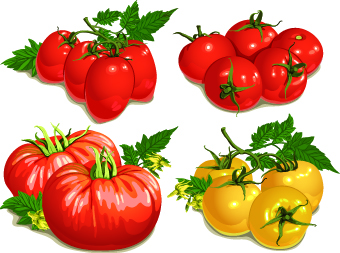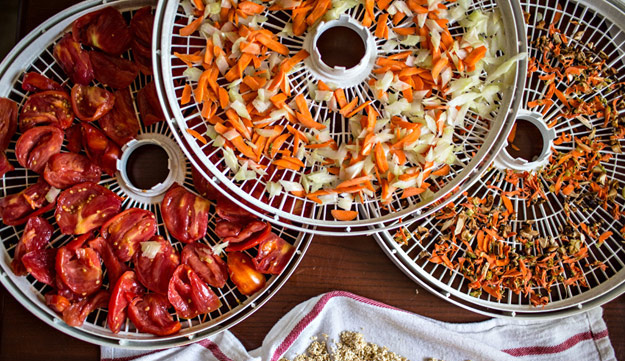Tomatoes: The Eater, the sandwich makers and the canners .
When discussing the tomato You have to understand that there are many different kinds of tomatoes. Great eating tomatoes such as the cherry tomato or the yellow pear. These are two of my favorite. The taste of a hot tomato as you pop it in your mouth right from the vine cannot be beat. These varieties can easily be grown on a porch in containers and will give large yields for the summer. These can be cut in half for salads and dehydrated. They often contain a meatier center with less liquid so you won't get a layer of liquid on the bottom of you salad. when I dehydrate them I cut them in half. You don't want to bother making small slices as these are already bite sized.
Varieties such as beefsteak make an excellent sandwich. One slice between toast with mayo!!!
I also can the larger varieties, making tomato sauce or stewed tomatoes.
Slice a tomato, add balsamic vinegar and mozzarella (homemade if you can) and this is how I "salad" a beefsteak or larger tomato.
Not only do tomatoes come in lots of sizes and shapes, but they come in different colors. Quite often you will find that red tomatoes are more acidic and yellow are less acidic. The black or purple varieties are usually on the more acidic side but usually not as much as some reds. When it comes to just picking and eating I enjoy all the colors but I do find that the yellow tomatoes are not what I would want to use to make sauce. I find it is not as flavorful.
canning!! This has become one of my favorite summer activities. I think it is the artist in me wanted to express herself. I enjoy making tomato sauce and having it for the winter when I refuse to buy tasteless, expensive tomatoes . I will be honest, since I can large amounts I buy in bulk and wait til the price is right. I also don't go cr.azy over needing a specific variety . I look for a meatier tomato that will take less time to cook down.
I also can the larger varieties, making tomato sauce or stewed tomatoes.
Slice a tomato, add balsamic vinegar and mozzarella (homemade if you can) and this is how I "salad" a beefsteak or larger tomato.
Not only do tomatoes come in lots of sizes and shapes, but they come in different colors. Quite often you will find that red tomatoes are more acidic and yellow are less acidic. The black or purple varieties are usually on the more acidic side but usually not as much as some reds. When it comes to just picking and eating I enjoy all the colors but I do find that the yellow tomatoes are not what I would want to use to make sauce. I find it is not as flavorful.
canning!! This has become one of my favorite summer activities. I think it is the artist in me wanted to express herself. I enjoy making tomato sauce and having it for the winter when I refuse to buy tasteless, expensive tomatoes . I will be honest, since I can large amounts I buy in bulk and wait til the price is right. I also don't go cr.azy over needing a specific variety . I look for a meatier tomato that will take less time to cook down.




